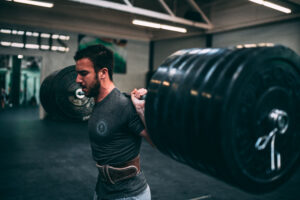
Is Working Hard Working Against You in Your Squats?
Written by Hunter Britt
Stuck in a rut with your squats?
How many squat cycles have you done and for how long have you been stuck at the same 1 rep max? The answer may not be to find the next and best squat cycle. The answer may be to just change your approach. Hard work and consistency are key to making progress, but when that hard work is suboptimal then we are just wasting a portion of our time on fruitless efforts. The other areas of making progress include targeting specific weaknesses and changing position.
Changing your squat position
Changing your position is typically easy to identify. Watch the best squats with similar builds to your own body and see if you look similar. If not, is it mobility, coordination, or a weak muscle group? Right now we are talking about weak muscle groups and working with your body type. If you are training your squats in positions that are not optimal for your body type then you are missing out on strength progress. Whatever position you train in and the muscles you are using the most is what you are targeting. This means that the other positions and muscles that are not getting as much work are the ones falling behind. But what if those other muscles and positions are the key to actually breaking through your plateaus.
Disclaimer: Ego’s are often a huge barrier to fixing some of these issues because some of the solutions to the problems will require you to take a step back before leaping forward.
Here are some common movement pattern faults for different body types:
Long Femur
Fault – You hinge over more than shorter femur athletes because you probably have a strong back and you just keep hinging more and more as the weight gets heavier.
Explanation – You often perform your squats too far hinged over on maximum weights putting more the ideal load on your posterior and not getting enough quad activation. Either dial back your training at maximum loads to train the best positioning that your bones and mobility allow for or add in additional quad training exercises to allow for them to play a larger role in your future squats so you are not inclined to fold over as much.
Tight Ankles
Fault – You are squatting with a too narrow of stance because that is how the olympic lifters squat.
Explanation – You have tight ankles that restricts you from getting into a low squat without significantly folding forward. Now you can not activate your quads. Wear Oly shoes and/or move your stance out wider. The oly shoes lift your heel to provide artificial range of motion in the ankle so your knees can travel forward and you can stay more upright. The wider stance will open your hips and not require your knees to travel as far forward.
Tight Shoulders
Fault – You put your hands too narrow, because again, that is what other people are doing. However, you are just getting a couple fingers around the bar or your wrists are bent back to their end range of motion.
Explanation – A tight upper back is very important on a heavy squat. Move your hands out wider so you can get a strong grip on the bar. You should be using your hands against the bar to help create as much tension in your upper back as possible. This is especially obvious to notice when an athlete starts to grind a lift on the top half of the squat and then their upper back is making an arch that Roman architects would be proud of.